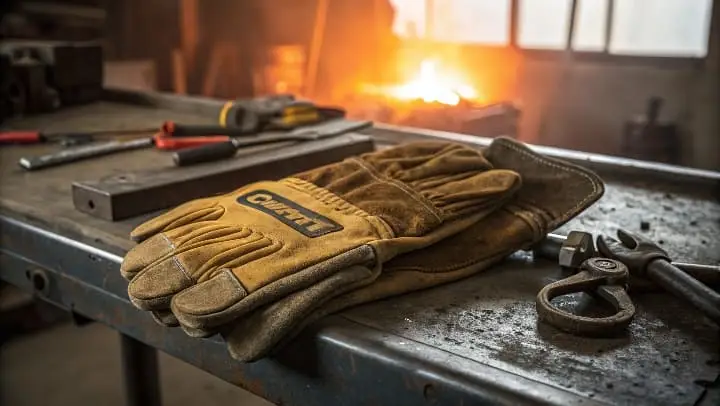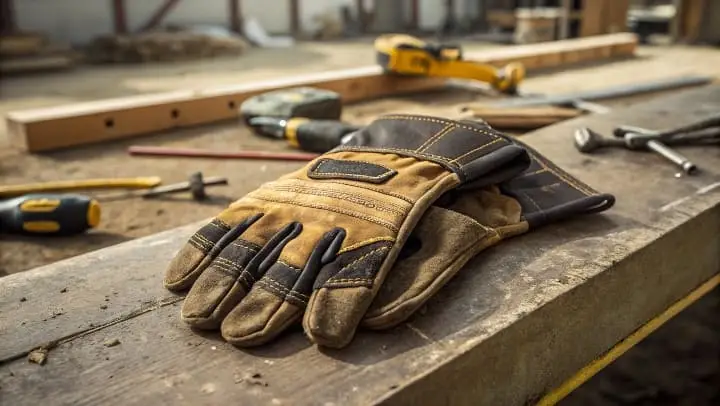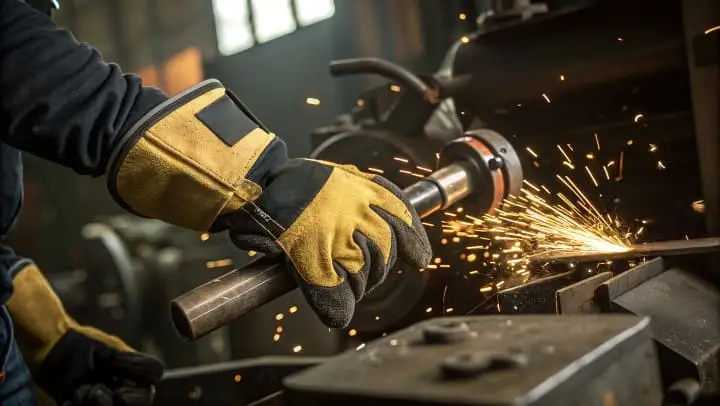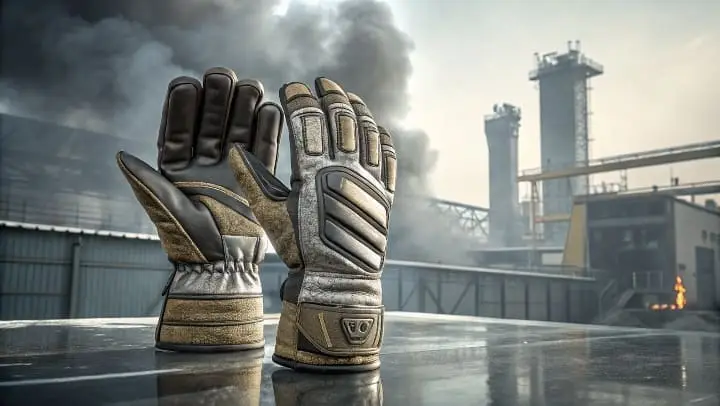Are you struggling to find the perfect work gloves that offer both durability and reliability?
Finding the right work gloves is essential for safety and efficiency on the job.

Choosing the right gloves1 can make all the difference. Let’s explore how to select the best gloves for your needs.
Who makes the best quality work gloves?
Are you unsure which brands produce the highest quality work gloves?
Top brands like Carhartt and Ironclad2 lead the market with their superior gloves.

When it comes to selecting work gloves, quality is paramount. I’ve researched various brands to identify which ones stand out in terms of durability, protection, and comfort. Carhartt and Ironclad3 are frequently mentioned as top contenders. These brands have built their reputations on producing gloves that withstand tough working conditions while providing the necessary protection. Carhartt gloves are known for their ruggedness and reliability, making them a favorite among construction workers and laborers. Ironclad, on the other hand, focuses on innovative designs and materials that offer enhanced protection without sacrificing comfort. Smaller brands also offer specialized gloves for specific tasks, catering to niche markets with unique needs. It’s important to consider the specific requirements of your job when choosing a brand. For instance, if you need gloves with excellent cut resistance4, brands like Ansell might be more suitable. Customer reviews and industry ratings5 can also provide valuable insights into the performance and longevity of different glove brands. By prioritizing quality and selecting a reputable brand, you can ensure that your hands are well-protected and comfortable throughout your workday.
What is the most durable material for work gloves?
Wondering which materials offer the highest durability for work gloves?
Materials like Kevlar and leather provide exceptional durability for demanding tasks.

Durability is a key factor when selecting work gloves. The material of the glove determines how well it can withstand wear and tear. Leather6 is a traditional favorite due to its toughness and flexibility. It offers excellent protection against abrasions and is suitable for heavy-duty tasks like construction and welding. However, leather gloves may not provide sufficient protection against chemicals or electrical hazards. Synthetic materials like Kevlar and Dyneema7 are known for their high tensile strength and cut resistance, making them ideal for tasks that involve sharp objects or machinery. Kevlar gloves are lightweight yet incredibly strong, offering protection without bulk. They are also resistant to heat, making them suitable for tasks that involve high temperatures. Another durable option is nitrile8, which provides excellent resistance to chemicals and punctures. Nitrile gloves are commonly used in industries where exposure to hazardous substances is a concern. Additionally, multi-layered gloves that combine different materials can offer enhanced durability and protection. For example, a glove with a leather outer layer and a Kevlar inner layer can provide both abrasion resistance and cut protection. When choosing the most durable material, consider the specific hazards you will encounter in your work environment. Investing in gloves made from high-quality, durable materials ensures that they will last longer and provide reliable protection, ultimately saving you time and money in the long run.
Material Comparison Table
| Material | Durability | Protection Type | Best For |
|---|---|---|---|
| Leather | High | Abrasion, Heat | Construction, Welding |
| Kevlar | Very High | Cut, Heat | Handling sharp objects |
| Nitrile | High | Chemical, Puncture | Chemical handling, Mechanics |
| Dyneema | Very High | Cut, Lightweight | Precision tasks, Manufacturing |
| PVC | Moderate | Waterproof, Chemical | Gardening, Cleaning |
What gloves have the most protection?
Looking for gloves that offer the highest level of protection for your hands?
Gloves with multi-layered designs and specialized coatings provide maximum protection.

Protection is a top priority when selecting work gloves. The most protective gloves are designed to shield your hands from various hazards while maintaining functionality. Multi-layered gloves9 offer enhanced protection by combining different materials, each serving a specific purpose. For instance, a glove with an outer layer of leather and an inner layer of Kevlar provides both abrasion resistance and cut protection. Additionally, specialized coatings such as nitrile or latex can add an extra layer of defense against chemicals and punctures. High-impact gloves10 incorporate materials like foam or gel padding to absorb shocks and protect against blunt force trauma, making them ideal for heavy machinery operation or construction work. Electrical gloves are designed with insulating materials to protect against electrical hazards, essential for electricians and workers in electrical environments. Chemical-resistant gloves11 are treated with specific coatings to prevent degradation from exposure to hazardous substances, crucial for laboratory or industrial settings. Furthermore, ergonomic designs that fit well and offer flexibility can enhance both protection and comfort, reducing hand fatigue during extended use. Features like reinforced fingertips, wrist guards, and adjustable closures also contribute to the overall protective capability of the gloves. When selecting gloves with the most protection, assess the specific risks associated with your job and choose gloves that address those hazards comprehensively. Investing in highly protective gloves not only safeguards your hands but also improves your overall safety and productivity on the job.
Protection Features Table
| Protection Feature | Description | Benefit |
|---|---|---|
| Multi-layered Design | Combines different materials for varied protection | Enhanced overall safety |
| Specialized Coatings | Nitrile, latex, or PVC coatings for specific hazards | Resistance to chemicals and punctures |
| Impact Protection | Foam or gel padding to absorb shocks | Reduces risk of injury from impacts |
| Electrical Insulation | Insulating materials to prevent electrical hazards | Safety for electrical work |
| Chemical Resistance | Treated materials to withstand chemical exposure | Protection in hazardous environments |
| Ergonomic Fit | Flexible and comfortable design | Reduces hand fatigue |
| Reinforced Tips | Extra protection on fingertips | Prevents wear and tear |
| Wrist Guards | Supports and protects the wrists | Stability and additional protection |
Conclusion
Choosing the right work gloves ensures safety and enhances productivity.
- This phrase is valuable as it's the main topic of the text. ↩
- These brands are highlighted as leading the market, making them valuable keywords. ↩
- These brands are highlighted as top contenders in the work gloves market. ↩
- This is a specific feature that readers might be looking for in work gloves. ↩
- This phrase is valuable as it suggests a method for evaluating different glove brands. ↩
- Leather is highlighted as a traditional favorite for work gloves, making it a valuable keyword. ↩
- These synthetic materials are noted for their high tensile strength and cut resistance, making them important keywords. ↩
- Nitrile is mentioned as a durable option that provides excellent resistance to chemicals and punctures. ↩
- Multi-layered gloves are highlighted as offering enhanced protection, making this a valuable keyword. ↩
- High-impact gloves are mentioned as ideal for heavy machinery operation or construction work, making them an important keyword. ↩
- Chemical-resistant gloves are crucial for laboratory or industrial settings, making this a valuable keyword. ↩


